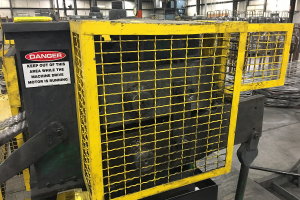OSHA pushing to protect whistleblowers
OSHA’s recent warning about safety incentive programs is just one part of a larger effort by the agency to strengthen whistleblower rights.
In an insightful article, Rod Smith, Pat Miller and Matt Morrison of the Sherman & Howard law firm detail a number initiatives in OSHA’s push for greater whistleblower participation and protection besides the warning on safety incentives:
• OSHA’s revised job site poster – required of all employers – now prominently advises employees of their rights to file safety complaints, request OSHA inspections and make whistleblower claims.
• The training requirements for OSHA’s approved 10 and 30 hour safety courses – used by thousands of employers in construction and general industry – have been revised to mandate more instruction on the exercise of employee rights in the workplace, including step-by-step instructions for filing an OSHA complaint.
• An increase in the number of OSHA retaliation complaints. In June 2012, OSHA found the Norfolk Southern Railway in violation of similar anti-retaliation provisions in the federal Railroad Safety Act when it terminated three employees who reported injuries. Damages of more than $800,000 were assessed.
And as I have discussed in previous blog posts on the incentives issue, OSHA is warning employers to be careful about rewards programs that could unintentionally – or perhaps even intentionally – encourage employees not to report injuries.
In a recent communication, OSHA cited as an example a program in which employers created a prize-drawing for all employees who had not been injured in the previous year. Another example of a bad practice in OSHA’s view is giving a team of employees a bonus if no one from the group was injured in a given period of time.
How to respond
So how should employers respond? Sherman and Howard offers these tips:
• Any employee policy, including safety incentive programs, can become legally suspect when it is enforced in a discriminatory or arbitrary manner or when the policy becomes a “pretext” or sham excuse for retaliation against the employee. Make sure all safety incentive programs are administered in a fair and consistent manner.
• Be alert to any situation where employees are in fact discouraged or prohibited from reporting workplace injuries and illnesses and take appropriate action. These situations could include simple employee misunderstandings about injury reporting requirements or, at the other extreme, supervisors not allowing employees to report injuries. If a paid safety bonus is causing employees to avoid reporting, then that bonus program should be reevaluated.
• Make certain your company’s safety and health program, employee handbook or training materials clearly spell out the employee’s obligation to report work-related injuries in a timely manner. Clearly spell out the company’s disciplinary policy for safety infractions. Also make clear that, by law, no employee will be retaliated or discriminated against for reporting injuries or illnesses or making safety complaints. Repeat this message as necessary through periodic safety meetings or tool box talks.
• Remember that OSHA’s recordkeeping rules require employers to set up a procedure for employees to report work-related injuries and illnesses. 29 C.F.R. §1904.35(b). Make sure this procedure is in place, communicated to employees, and that all recordable injuries are correctly and timely logged on the OSHA 300 form.
• Although employees always have the legal right to call OSHA, employee safety concerns are better addressed through direct contact with management. Encourage your employees to promptly report any safety and health concerns to their immediate supervisors or, as applicable, safety personnel and upper management.
And make certain supervisors are properly trained on OSHA’s whistleblower requirements including the various forms of “protected activity,” the various types of illegal retaliation under the law, and what to do when faced with an OSHA whistleblowing complaint or investigation.
Subscribe to Jim Stanley’s OSHA blog and receive updates in your email box or on your reader.



3 Comments
Employees have the right to work in a safe environment. If an employer is at fault and violating codes, they should be penalized for it. OSHA violations result in injuries that result in lost productivity.
OSHA rules exist for a purpose – to help keep you safe at your workplace. Property owners, subcontractors, prime contractors, vendors and others possess a responsibility to follow OSHA guidelines. You can easily get injured when accountable parties violate the rules.
Basically, everyone seems to be at risk when OSHA regulations are certainly not implemented.